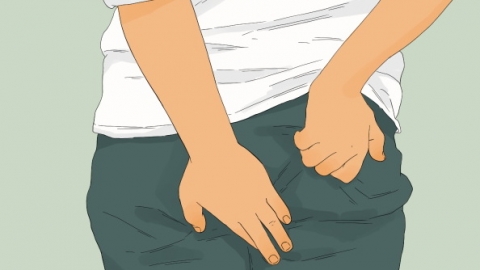What causes water blisters around the anus without pain or itching, and what should be done?
Water blisters around the anus that are neither painful nor itchy may be caused by friction irritation, local moisture, allergic reactions, herpes simplex, or perianal eczema. Improvements can be made depending on the specific cause. It is recommended to seek timely medical attention at a hospital and receive treatment under the guidance of a doctor.

1. Friction Irritation
If wearing tight underwear or pants, prolonged friction may irritate the skin around the anus, leading to blister formation. Switch to loose, soft cotton underwear and clothing to reduce friction. Avoid sitting for long periods and keep the anal area clean and dry. If blisters have already formed, gently wash with warm water and apply a lubricant to reduce further friction.
2. Local Moisture
The anal area naturally contains many sweat glands. Excessive sweating or poor personal hygiene can lead to local dampness. When the skin remains moist for extended periods, the stratum corneum may absorb water and swell, potentially forming blisters. Maintain good personal hygiene by washing the anal area daily with warm water, especially after heavy sweating.
3. Allergic Reaction
Contact with new toilet paper, wet wipes, underwear materials, or use of irritating cleansers may trigger an allergic reaction. When the skin around the anus comes into contact with allergens, the immune system may respond by forming blisters, which might not immediately cause pain or itching. Identify and avoid the allergen as soon as possible. Rinse the anal area thoroughly with water to remove any residual substances that could be causing the allergy.
4. Herpes Simplex
Infection with the herpes simplex virus can cause blisters around the anal skin. The virus replicates at the junction of skin and mucous membranes, leading to cellular degeneration and necrosis, resulting in blister formation. Initially, there may be no pain or itching, but as the condition progresses, blisters may rupture, crust over, and begin to cause pain. It is recommended to use medications such as acyclovir cream, valacyclovir tablets, or calamine lotion under a doctor’s supervision to alleviate symptoms.
5. Perianal Eczema
Conditions such as local moisture, allergies, or psychological factors may all contribute to perianal eczema. In the early stages, water blisters may appear around the anus due to inflammatory reactions causing intraepidermal edema. At this stage, noticeable itching or pain may not yet be present. Patients should follow medical advice and may use medications such as dexamethasone cream, antipruritic ointment, or boric acid solution to relieve discomfort.
In daily life, it is advisable to maintain a light diet and avoid spicy or irritating foods such as garlic, hot pot, mustard, etc. Adequate rest is important, and excessive fatigue should be avoided to prevent adverse effects on overall health.











